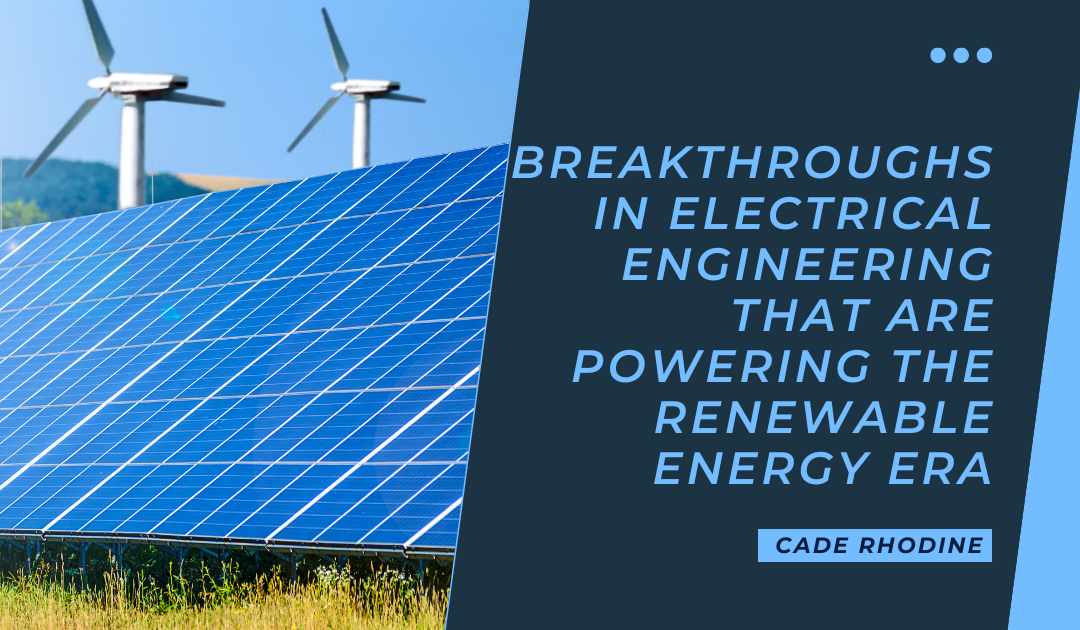The transition to renewable energy is not just a shift in power generation—it’s a revolution that demands innovation across many disciplines. Among the most critical contributors is electrical engineering, which plays a pivotal role in making renewable energy sources viable, scalable, and efficient. From improving power grid reliability to enhancing energy storage and optimizing power electronics, electrical engineers are at the forefront of reshaping the global energy landscape.
One of the most transformative breakthroughs in electrical engineering is the development of smart grids. Traditional power grids were designed for one-way transmission from centralized power plants to consumers. In contrast, smart grids are dynamic and interactive. They can incorporate multiple, decentralized renewable energy sources—like solar panels on homes or wind turbines on farms—and balance supply and demand in real-time. Electrical engineers have led the way in designing communication protocols, control algorithms, and sensors that allow these grids to respond automatically to changing energy flows, helping to stabilize the power system and reduce blackouts.
Energy storage technologies have also seen remarkable progress, largely driven by innovations in electrical engineering. The intermittent nature of solar and wind power presents a significant challenge: energy must be stored when generation exceeds demand and dispatched when needed. While battery technology often garners attention, the electrical systems that control, manage, and integrate these batteries into the grid are equally crucial. Engineers are developing advanced power management systems that improve the efficiency, safety, and lifespan of storage solutions—from lithium-ion batteries to emerging options like flow batteries and solid-state storage.
Another major advancement lies in power electronics, which are essential for converting and controlling electrical power. Renewable energy sources often produce direct current (DC), whereas the grid operates on alternating current (AC). High-efficiency inverters and converters are necessary to make this transformation possible. Electrical engineers are designing new materials, such as silicon carbide (SiC) and gallium nitride (GaN), which offer lower energy losses and higher thermal performance than traditional silicon. These improvements translate to more efficient solar panels, wind turbines, and electric vehicles—key components of a renewable-powered world.
The integration of renewable energy into existing infrastructures also depends on accurate modeling and forecasting. Engineers use complex algorithms and artificial intelligence to predict energy production from variable sources like wind and solar. These models inform decision-making on everything from energy dispatch to maintenance scheduling. Moreover, electrical engineering advancements in machine learning and data analytics are enhancing these predictions, reducing waste, and increasing overall system efficiency.
Microgrids represent another exciting frontier in renewable energy, made possible through innovations in electrical engineering. These localized energy systems can operate independently or in coordination with the main grid. They are particularly valuable for remote communities or regions prone to natural disasters. Engineers are developing sophisticated control systems that allow microgrids to seamlessly transition between grid-connected and islanded modes, maintain power quality, and manage distributed energy resources.
Electric vehicles (EVs), while primarily associated with the transportation sector, are deeply intertwined with electrical engineering developments. Engineers are working on vehicle-to-grid (V2G) systems that allow EVs to serve as energy storage units, feeding power back into the grid during peak demand. This bi-directional flow of electricity demands precision engineering in terms of power converters, communication protocols, and cybersecurity.
Cybersecurity, in fact, has become a growing focus in the context of renewable energy. As power grids become more digitized and interconnected, they also become more vulnerable to cyber threats. Electrical engineers are designing robust security architectures to protect data and infrastructure, ensuring that the energy systems of the future are both smart and secure.
As nations strive to meet climate targets and reduce dependence on fossil fuels, electrical engineering will remain a linchpin in the energy transition. The integration of renewables into our daily lives—from the power we use in our homes to the vehicles we drive—is accelerating thanks to the tireless work of engineers innovating behind the scenes. By solving technical challenges, optimizing systems, and building resilient infrastructures, they are not only powering homes and industries but also enabling a sustainable future for generations to come.

